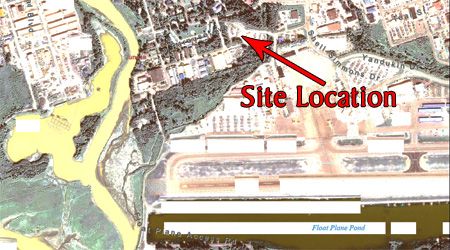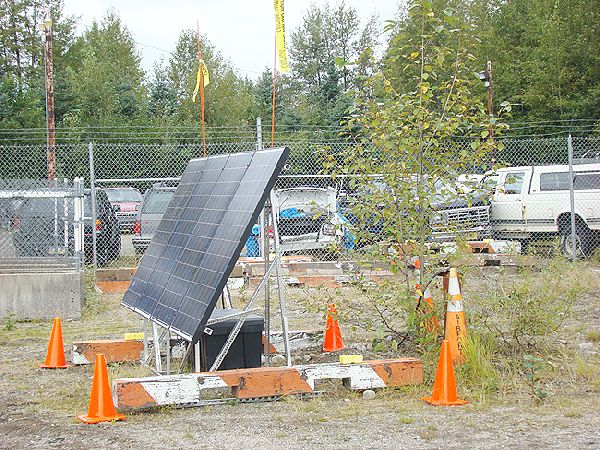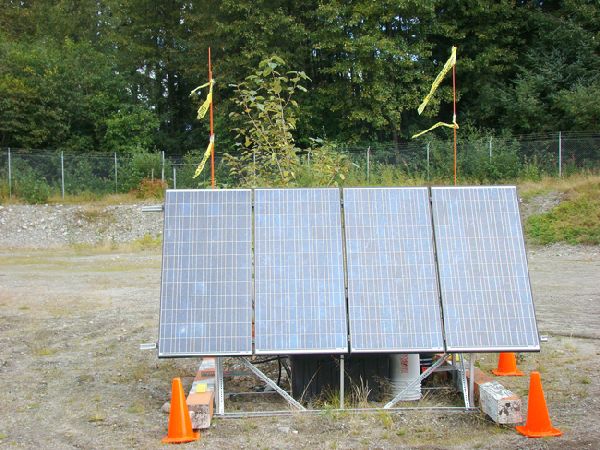Juneau Airport Fueling Facility
- View detailed information from the database on this site.
- Database Name: Juneau Airport Fueling Facility
- Status: Active
- Location: Juneau
- Latitude: 58.362254
- Longitude: -134.588824
DEC Contaminated Sites contact: Rebekah Reams, Project Manager, 907-451-2144
- Click on photos or maps for larger versions.
- Contacts updated: 2/16/2023
- Summary updated: 2/16/2023
Site Narrative
Description
This eight acre site is located in a mixed commercial and residential area on the northern portion of the Juneau International Airport. The former Chevron bulk fuel terminal, later operated by Delta Western, occupied approximately one-quarter acre and consisted of two 25,000-gallon jet fuel above ground storage tanks (ASTs), one 25,000-gallon aviation gasoline underground storage tank (UST), a pump house, and two loading racks. Delta Western constructed a new bulk fuel facility approximately 100 feet southeast of the former location, consisting of two 30,000-gallon jet fuel ASTs and one 30,000-gallon aviation gasoline AST.
The original 25,000-gallon tanks, site facilities, and 318 tons of contaminated soil were removed in 1998. Confirmation samples collected following the excavation detected the presence of contamination above DEC cleanup levels. Additional excavation of contaminated soil was completed in 2000 when approximately 1,300 tons of contaminated soil was removed from the former UST excavation area. Additional characterization completed at this site has included the advancement of soil borings and installation of monitoring wells MW-1 through MW-4.
Following the excavation, remaining petroleum contamination in soil continued impacting groundwater on the property. One monitoring well (MW-4) was used to make periodic checks on the natural breakdown (see glossary on natural attenuation) of the remaining petroleum. Site monitoring wells MW-1 through MW-3 were sampled on a semi-annual basis from the time they were installed in 2000 until they were decommissioned in 2005. No groundwater cleanup level exceedances have been observed at these wells.
Due to continued groundwater impacts, a solar power ozone injection remedial system was installed at MW-4 to reduce dissolved-phase hydrocarbons in groundwater. This system operated from 2007 until 2014. In 2014 the system was decommissioned and routine groundwater monitoring at MW-4 concluded. The June 2014 groundwater monitoring event reported the presence of DRO above cleanup levels at a concentration of 9.9 milligrams per liter (mg/L) reduced from initial concentration of 125 mg/L in 2000 when sampling was initiated.
Additional site investigation that was completed north of the former UST site on Lots 5 and 6 to assess whether contamination associated with this site had impacted an area where a new tank farm development was proposed. Three of the 20 soil samples collected, and two grab groundwater samples reported the presence of contamination above cleanup levels. The volume of subsurface soil with residual contamination in the development area was estimated at 170 cubic yards.
Public Health and Environmental Concerns
In 2007 a sensitive receptor survey and conceptual site model were completed to determine if there were any pathways present where humans or wildlife could be exposed to remaining contamination. Historical data identified 66 wells within a 1/2-mile radius of the site. A door-to-door visit to 75 parcels located one private well located 3/8-mile west of the site on Radcliffe Road that was used daily as a potable water supply. This potable water supply well was sampled and analytical results indicated all analytes were below cleanup levels.




